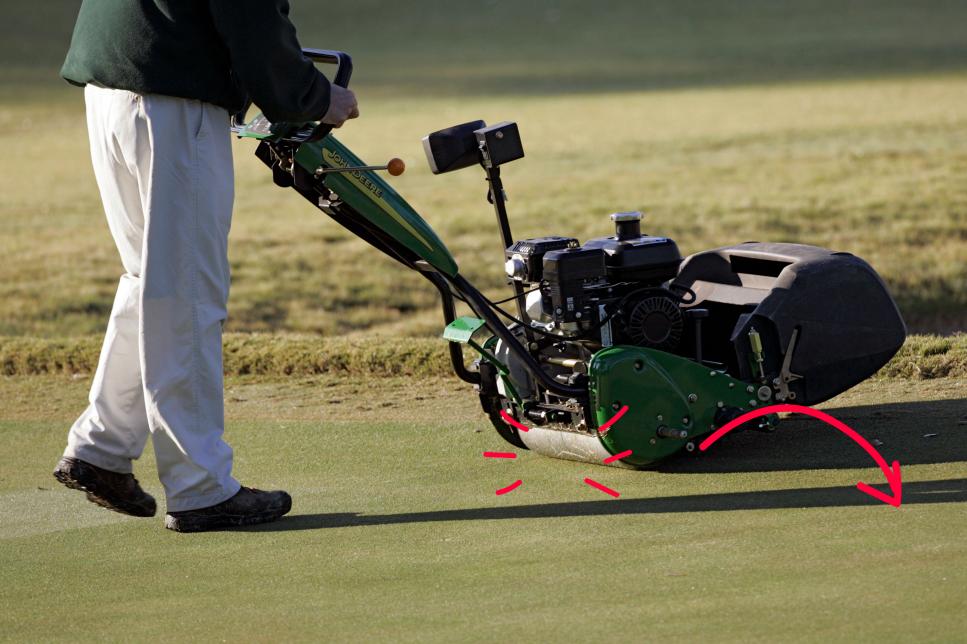[PHOTO: digitalhallway]
It’s amazing how much the speed of the greens can change a golfer’s perception of a course. Golfers can play a rather boring course, architecturally speaking, but if the greens are rolling fast and true, that might be all they talk about. On the other hand, slow and bumpy greens can ruin a round no matter how captivating the design is.
Rightly or wrongly, most golfers are picky when it comes to the speed of the greens. Fast enough to feel like you don’t have to slam every putt, but not so fast that two-putts are rare. That presents a challenge to our golf course superintendents, as there are factors beyond their control when it comes to the speed of greens.
To understand why green speeds fluctuate and why superintendents can’t simply mow the greens as short as possible to achieve lightning-fast speeds, we caught up with Jason Meersman, the director of grounds at The Patterson Club in Fairfield, Connecticut.
Jason, why does it seem like the greens at my course are really fast one day and then much slower the next?
The speed of greens depends on a number of factors, including the height of cut, smoothness, slope percentage and fertility inputs. A lot of it is associated with humidity. When it gets really humid, for example, it is much harder to obtain fast greens. The greens won’t roll as quickly as they would under drier conditions. That’s why it’s very challenging to keep your speeds up during the summer. They’re going to fluctuate.
If your club is used to a 12 on the Stimpmeter in the spring and autumn, in the summer months when it gets really humid, it’s tough to maintain that. There’s a little atmospheric layer just above the ground where the humidity is evaporating the water that’s in the ground, and it comes up and creates a little layer. Your ball drags through that, which affects green speeds anywhere from a foot to a foot-and-a-half.
That evaporating moisture from the ground just sits on top of the green’s surface, and you can put your hand down there and feel it. It’s warmer down there. Imagine the ball dragging through that humidity. It’s just like when you’re out going for a jog on a humid day, it feels a heck of a lot harder when it’s hot and humid than it does when it’s cool and crisp. It’s kind of that same exact same mentality.
On those humid days, can you just cut the greens shorter?
Not quite. There’s a one-third rule that if you cut more than a third of the plant at once, it’s harmful to the plant. You’re scalping it. And when your grass is a tenth of an inch or less, it doesn’t take long for it to grow to a harmful height. That’s why I get my staff to maintain the speed of the greens with the frequency of cut.

OK, but can’t you roll the greens to make them faster as well?
Yes, but you have to be careful. Rolling is one of the more aggressive practices you can do. It’s actually more aggressive than mowing. The grass starts dying on the edges of the green where the roller is stopping and going and stopping and going. It’s like when you twist a friend’s arm back and forth to create a burn. That’s what’s happening every time the roller is stopping and going.
When I go to golf courses and the edges are all fried out, it’s usually because they are over-rolling, or rolling at the wrong time of the day. Bentgrass doesn’t like to be rolled wet. That pinching motion really hurts the grass when it’s wet. That’s why I like to roll the greens when it’s dry out and towards the end of the day.
Sounds like you have a lot of factors to weigh up when it comes to maintaining green speeds?
There are a lot of factors, and those factors change due to weather, play, grass type and agronomic practices. I always say we’re CSI traffic. If you’re not watching how much traffic you’re putting out, you’re in trouble.



